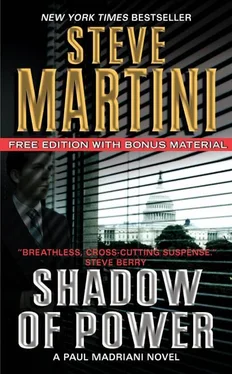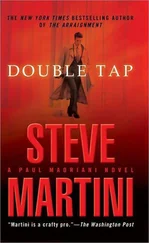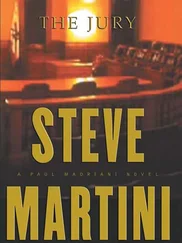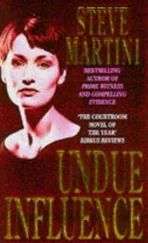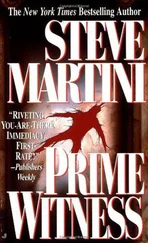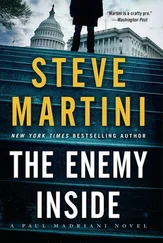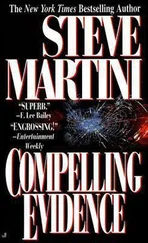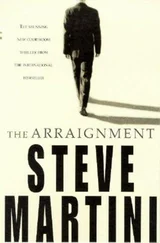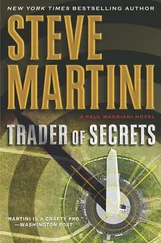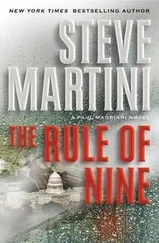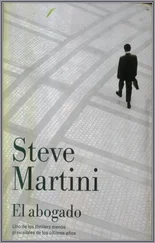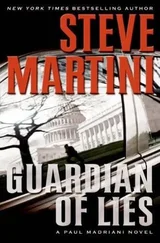He says, “Yes.” He remembers fixing them a couple of times. According to the witness, they were a particular problem because they were double doors, a six-foot span instead of just three, with one of the doors bolted to the floor and the doorframe above and fixed in place, while the other door swung open and closed.
I then put on a pair of latex surgical gloves and have the clerk retrieve the hammer, the murder weapon, from the evidence cart. I show this to the witness.
“Have you ever seen this hammer before?”
He looks at it closely, puts on a pair of glasses. “Is that it?” He seems surprised. “Is that the hammer that was used to kill the man?”
I assure him that this is the murder weapon and ask him again if he has ever seen it before.”
“Well, yeah,” he says. “The paint marks there on the handle and the number stamped into the top. That was one of the hammers I used all the time to fix the doors. I just thought somebody stole it when I came back from vacation. I didn’t even put in a claim, ’cuz I knew the hotel wouldn’t pay for it. So I just bought another one. Replaced it,” he says.
“We’ll get to that in a moment,” I tell him. “For now, let me ask you a question. If this hammer was inside the maintenance closet on the top floor of the Regis, and the lock on the door to that closet was broken so that it didn’t catch, is it not a fact that anyone could have pulled on that door, opened it, and taken the hammer?”
“I suppose so.”
“Would they have needed a key to open the maintenance-closet door?”
“Not if the lock wasn’t working,” says Hettinger. “But it really wouldn’t have mattered,” he says.
“Why not?”
“Because that hammer, the one you got there, it wasn’t in the maintenance closet.”
This sets off a stir out in the audience. Tuchio, who has been making notes, points of attack to use in coming at the witness on cross-examination, puts down his pen.
“If it wasn’t in the maintenance closet, where was it?”
“Oh, we kept a couple of hammers in that closet, but that one, because of the straight claws on it”-he points with his finger-“that one I kept on an open shelf in the main staircase on the eighth floor.”
“Why would you do that?”
“Because we only had two good ones, tempered-steel hammers with straight claws, I mean. All the rest were round, curved claws,” he says. “The straight claws we kept in the staircase, along with a screwdriver and a couple of wooden wedges. They were a special set of tools,” he says. “To fix the doors.”
I have him explain to the jury how this worked. That he would loosen the screws on the door hinges with the screwdriver, then use the straight claws on the hammer to lever the door from the bottom, by slipping the claws in the crack between the floor and the bottom of the door. Using the leverage of the hammer handle, he would jimmy the door in place until it was square and then slip a wooden wedge into the space beneath the door to hold it in place while he tightened the hinge screws again. To listen to Hettinger, it was an endless job.
“We kept one set of tools-the straight-claw hammer, the screwdriver, and the wedges-on a shelf on the eighth floor and the other one four stories down, in the same staircase.
“Why not in one of the maintenance closets on those floors?”
“We did that for a while. But on the day shift there’s eight of us working maintenance, three at night. Seemed like every time I got a call to fix a door, I’d go to get the hammer, and somebody else had it. All that was left was the curved claws, and they were useless. Because of the way the claws are rounded,” he says. “You couldn’t get the claws under the door because the hammer handle would jam against the side of the door. I’d have to run all over the hotel and find who had straight claws and get ’ em back. So I figured it was easier to take ’em out of the closet and store ’em someplace else.”
The witness tells the jury that the stairwell where the hammers were stored was open to the public. It had to be. It was the main fire escape. Anyone wanting to use it could simply walk in and climb the stairs. But according to Hettinger, almost no one ever did.
“Would you climb fourteen stories if you had an elevator?” He looks to the jury as he asks the rhetorical question. “That’s why I figured, a couple of tools on a shelf in a corner, down low where it was hard to see, who’s gonna mess with them?”
We now know one other thing. Whoever killed Scarborough didn’t use the elevator.
Quinn calls the midmorning break, and as soon as we are back in court, Tuchio tries his best to shake Hettinger’s testimony concerning the hammer and where it was stored in the days just before the murder.
First he browbeats Hettinger to soften him up, demanding to know why the witness did not come forward to report these facts-the location of the hammer, the broken lock-to police, after he realized that this was the murder weapon.
“I never knew it was the murder weapon till today,” he says.
This is true. When Herman was talking to Hettinger, while springing for sandwiches and a beer in a bar during Hettinger’s lunch hour, Herman managed to gather up all the interesting little tidbits about dysfunctional doors and locks in the hotel. He was busy scribbling notes as to how the doors had to be jimmied up in order to repair them.
When Hettinger started complaining that his hammer was gone when he came back from vacation, and that he had to buy a new one out of his own pocket because he knew the hotel wouldn’t pay for it, since he didn’t store the missing hammer in the “locked” maintenance closet, Herman almost dropped his pencil. It wasn’t hard to figure what had happened, especially after Hettinger described the straight claws and the reason he hid the hammer in the stairwell in the first place.
Herman never told the witness that the hammer he had stored there was the murder weapon, and from reading the newspapers how was Hettinger to guess? According to the cops, the hammer was taken from the maintenance closet, where the witness hadn’t gone looking for a hammer in months. He had to assume that the police knew what they were talking about.
Tuchio now stands in front of the witness, incredulous, disbelieving that Hettinger didn’t realize. “Didn’t Mr. Madriani tell you?”
“Who’s Mr. Madriani?” says Hettinger.
“The lawyer who just questioned you!” says Tuchio.
“I never saw him before today, just now,” he says.
“Then who did you talk to? Somebody from his office?” he asks.
“I don’t know. I didn’t get the man’s name,” he says. “I just had lunch with him. Big guy, black fellow,” he says. “Nice guy. He bought me lunch.”
Tuchio wants a conference at the side of the bench. By the time I get there, he is hopping mad, and this time you can tell he’s not acting. “We had no disclosure as to this witness,” he tells Quinn.
“The man was on our list,” I tell Quinn.
“You know damn well what I mean.”
“Your language, Mr. Tuchio, for the record.” Quinn gestures with his head toward the court reporter standing behind the prosecutor with her stenograph machine, taking it all down.
“This is trial by ambush,” says Tuchio.
“Your Honor, we’re not responsible for the state’s investigation-or lack of it, for that matter. Mr. Hettinger has been going to work every day for months since Mr. Scarborough was murdered. The police had every opportunity to go out and talk to him.”
“Did you have a signed written statement from the witness?” Quinn directs this to me.
“No, Your Honor, we did not.”
“Then without a written statement, there was nothing to disclose except the witness’s name,” says the judge, “and from what I understand, you received that, Mr. Tuchio.”
Читать дальше
